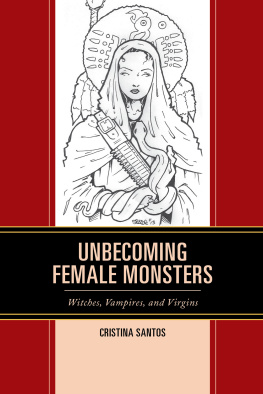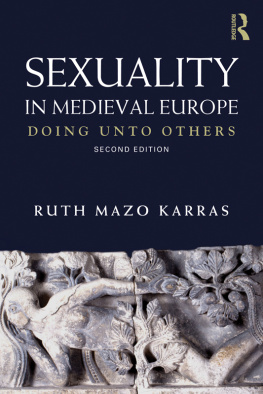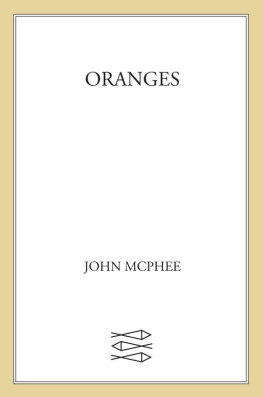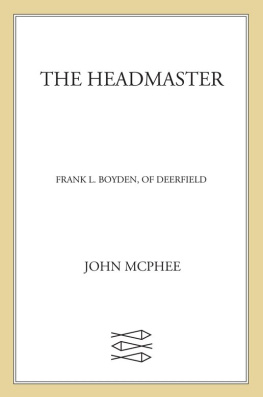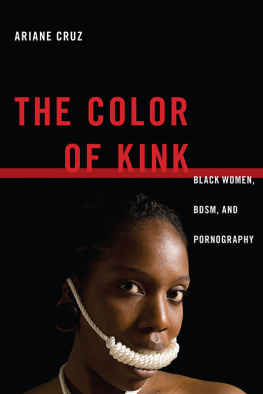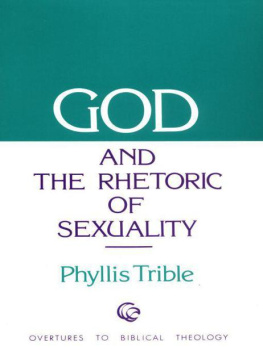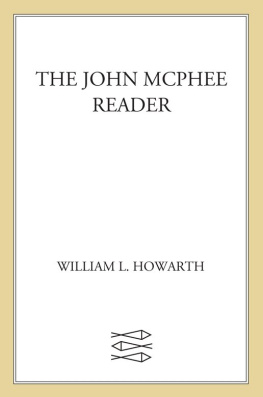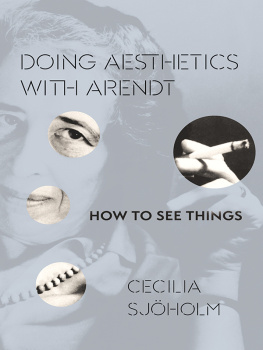Ruth Mcphee - Female Masochism in Film: Sexuality, Ethics and Aesthetics
Here you can read online Ruth Mcphee - Female Masochism in Film: Sexuality, Ethics and Aesthetics full text of the book (entire story) in english for free. Download pdf and epub, get meaning, cover and reviews about this ebook. year: 2014, publisher: Ashgate Publishing, genre: Romance novel. Description of the work, (preface) as well as reviews are available. Best literature library LitArk.com created for fans of good reading and offers a wide selection of genres:
Romance novel
Science fiction
Adventure
Detective
Science
History
Home and family
Prose
Art
Politics
Computer
Non-fiction
Religion
Business
Children
Humor
Choose a favorite category and find really read worthwhile books. Enjoy immersion in the world of imagination, feel the emotions of the characters or learn something new for yourself, make an fascinating discovery.

- Book:Female Masochism in Film: Sexuality, Ethics and Aesthetics
- Author:
- Publisher:Ashgate Publishing
- Genre:
- Year:2014
- Rating:5 / 5
- Favourites:Add to favourites
- Your mark:
- 100
- 1
- 2
- 3
- 4
- 5
Female Masochism in Film: Sexuality, Ethics and Aesthetics: summary, description and annotation
We offer to read an annotation, description, summary or preface (depends on what the author of the book "Female Masochism in Film: Sexuality, Ethics and Aesthetics" wrote himself). If you haven't found the necessary information about the book — write in the comments, we will try to find it.
Ruth Mcphee: author's other books
Who wrote Female Masochism in Film: Sexuality, Ethics and Aesthetics? Find out the surname, the name of the author of the book and a list of all author's works by series.
Female Masochism in Film: Sexuality, Ethics and Aesthetics — read online for free the complete book (whole text) full work
Below is the text of the book, divided by pages. System saving the place of the last page read, allows you to conveniently read the book "Female Masochism in Film: Sexuality, Ethics and Aesthetics" online for free, without having to search again every time where you left off. Put a bookmark, and you can go to the page where you finished reading at any time.
Font size:
Interval:
Bookmark:
FEMALE MASOCHISM IN FILM
Film Philosophy at the Margins
Series editor: Patricia MacCormack, Anglia Ruskin University, UK
Film Philosophy at the Margins picks up on the burgeoning field of film philosophy the shift from film analysis and explication to bringing together film with philosophy and coalesces it with films, genres and spectator theory which have received little critical attention. These films could be defined as marginal due to being considered marginal marginalizing representations of violence, marginal invocations of sexuality and queer performativity, margins of bodily modification from disability to performance art, marginal in their abstraction of representative codes, marginal in reference to their address to the politics of social control, spectatorship and cinematic pleasure as marginal due to its unique status and quality, among many other interpretations of extreme. The film philosophy which underpins the exploration of these films is primarily Continental philosophy, rather than the more dominant field of cognitive film philosophy, utilizing increasingly attractive philosophers for film theory such as Deleuze, Guattari, Rancire, Foucault, Irigaray and Kristeva. The series ultimately seeks to establish a refined and sophisticated methodology for re-invigorating issues of alterity both in the films chosen and the means by which Continental philosophers of difference can paradigmatically alter ways of address and representation that lifts this kind of theory beyond analysis and criticism to help rethink the terrain of film theory itself.
Sexuality, Ethics and Aesthetics
RUTH McPHEE
ASHGATE
Ruth McPhee 2014
All rights reserved. No part of this publication may be reproduced, stored in a retrieval system or transmitted in any form or by any means, electronic, mechanical, photocopying, recording or otherwise without the prior permission of the publisher.
Ruth McPhee has asserted her right under the Copyright, Designs and Patents Act, 1988, to be identified as the author of this work.
Published by
Ashgate Publishing Limited
Wey Court East
Union Road
Farnham
Surrey, GU9 7PT
England
Ashgate Publishing Company
110 Cherry Street
Suite 3-1
Burlington, VT 05401-3818
USA
www.ashgate.com
British Library Cataloguing in Publication Data
A catalogue record for this book is available from the British Library
The Library of Congress has cataloged the printed edition as follows:
McPhee, Ruth.
Female masochism in film : sexuality, ethics and aesthetics / by Ruth McPhee.
pages cm. -- (Film philosophy at the margins)
Includes bibliographical references and index.
ISBN 978-1-4724-1316-1 (hardback) -- ISBN 978-1-4724-1317-8 (ebook) -- ISBN) 978-1-4724-1318-5 (epub) 1. Women in motion pictures. 2. Masochism in motion pictures. 3. Ethics in motion pictures. 4. Motion pictures--Aesthetics. I. Title.
PN1995.9.W6M3855 2014
791.436522--dc23
2014003684
ISBN 9781472413161 (hbk)
ISBN 9781472413178 (ebk PDF)
ISBN 9781472413185 (ebk ePUB)
Thank you to my extended family of McPhees and honorary McPhees, for unfailing support emotionally and materially: Joanna McPhee, Paula McPhee, Tim McPhee, Farah McPhee, Sarah McPhee; Katy Holliday, Jake Dyer, and all the rest. Also thanks go to my team of proofreaders for their attentive eyes and astute comments: Tina Kendall, Louis Bayman, Mark Blay and Emily Cooper. Thank you to Sarah Cooper, for patience and encouragement in the early days of this project, and special thanks to Patricia MacCormack for prodding me into action and self-belief.
From the mid-1990s onwards, an emergent representational tendency has been visible across a range of otherwise contextually disparate films. These films have in common narratives that are driven by female protagonists and that focus upon female subjectivities, yet, beyond this broad commonality a more specific concern surfaces in the way in which these subjectivities and particularly the sexuality of these female characters is manifested: in terms of a heterosexuality concentrated upon masochistic desires and experiences. These female protagonists find their pleasure through the relinquishing of control to the dominance of the other, placing themselves in perilous or humiliating situations, seeking pain, opening themselves up to the assumption of passive or submissive positions. Female masochism is portrayed in a variety of ways in this body of films, sometimes overtly and in explicit terms and sometimes as a more subtle undercurrent that nonetheless acts as an organizing principle for the protagonists subjectivity and for the narrative trajectory of the film. The masochistic desire of these characters is depicted variously as redemptive, sacrificial, mournful, transgressive and in extreme cases as conducive to self-destruction and annihilation. Furthermore, these thematic concerns are frequently accompanied by an aesthetic that echoes, enhances or engages with the vicissitudes and ambiguities of masochistic desire, and that addresses the viewer in such a way as to catalyse a masochistic form of spectatorial experience rooted in a combination of pleasure and unpleasure. The films included for discussion in subsequent chapters were produced in a range of countries in Europe, North America and Australia. As such they cannot be categorized as entailing a movement either in the sense of resulting from a deliberate intention on the part of the filmmakers, or in the more diffuse sense often applied retrospectively within the popular media and academia. Indeed, several of the films addressed here have been individually claimed for other cinematic trends (for example the New Extremism, British realism and New French Cinema). Just as they cannot be regarded as a coherent movement, nor can they be easily classified as constituting a particular genre and could be designated as belonging to several different generic models (thriller, romance, melodrama, even, debatably, pornography). It is therefore not my intention to pigeonhole these often very different films according to an awkwardly proclaimed label or headline, rather, it is the very fact of the dispersive nature of this group of films and the pervasiveness of this representational motif that suggests a timely .
Although the formal strategies used by the filmmakers discussed in this volume are disparate and often highly distinctive between themselves, a shared concern arises with the testing of representational boundaries and taboos in order to present challenging imagery that is rarely found within the space of cinema, whether this imagery be sexually explicit, violent and horrifying or bewilderingly avant-garde. Female masochism, then, has emerged as a means of forging an aesthetic that questions, deconstructs and subverts normative cultural frameworks surrounding female subjectivity and sexuality. It is this process of interrogation and deconstruction that functions to germinate the ethical potential of an exploration of female masochism culturally and philosophically. Value-laden terminology surrounds the masochistic body and the female body alike: these bodies are perverse and taboo, monstrous and obscene, transgressive phenomenon that appear in the consciousness of society to thwart or demolish any stable notions of propriety or normality in regard to the socially situated human subject. Rosi Braidotti is one of a number of recent theorists who have engaged with the concept of the post-human in order to demonstrate not that the category of the human is transforming in the late twentieth and early twenty-first century but that the very concept of the human as expressed in the doctrines of Western Humanism has always been flawed, mired in and constructed according to dominant discursive formations that strive to maintain the illusion of an ideal human subject that mirrors the entrenched positions of patriarchy, capitalism and Eurocentricity. Braidotti neatly summarizes this position:
Next pageFont size:
Interval:
Bookmark:
Similar books «Female Masochism in Film: Sexuality, Ethics and Aesthetics»
Look at similar books to Female Masochism in Film: Sexuality, Ethics and Aesthetics. We have selected literature similar in name and meaning in the hope of providing readers with more options to find new, interesting, not yet read works.
Discussion, reviews of the book Female Masochism in Film: Sexuality, Ethics and Aesthetics and just readers' own opinions. Leave your comments, write what you think about the work, its meaning or the main characters. Specify what exactly you liked and what you didn't like, and why you think so.

